Making a Living on the Flats
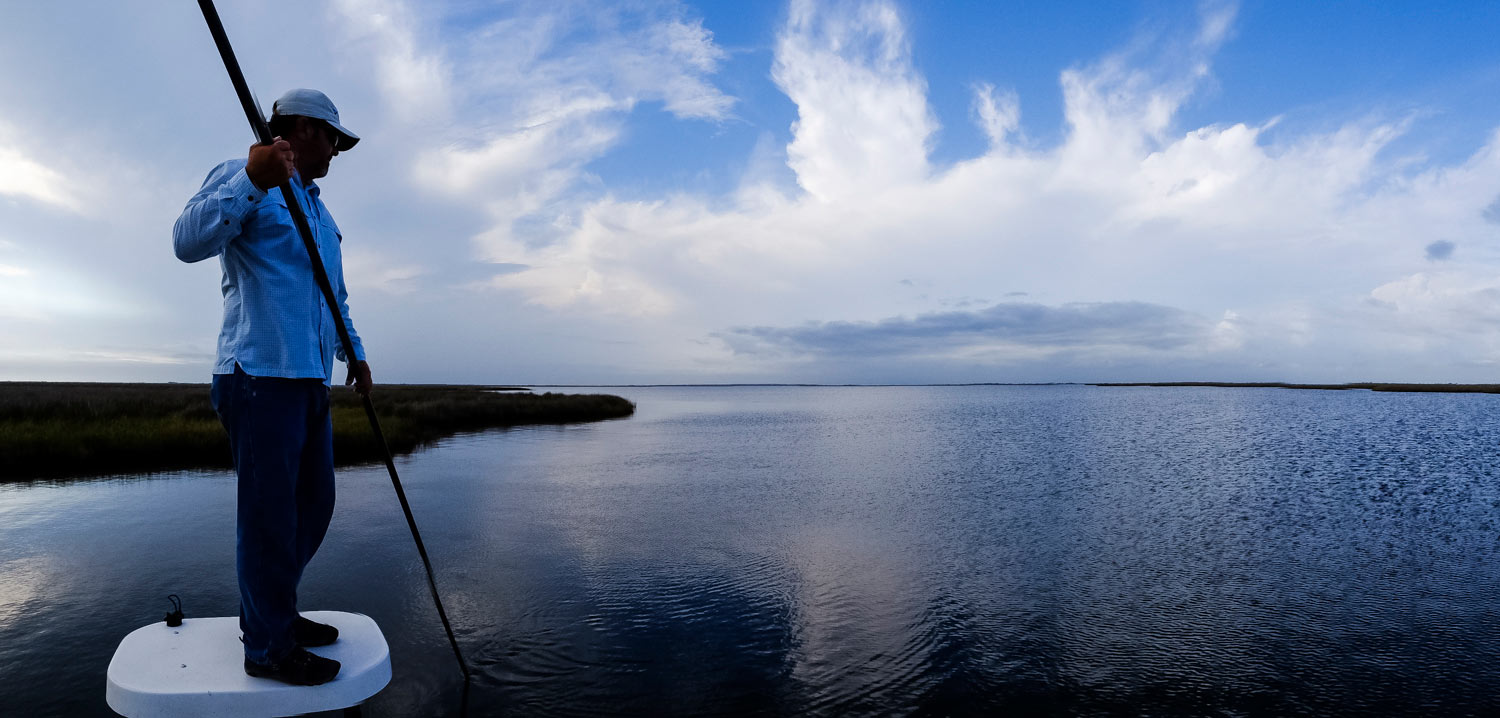
By Owen Plair
Lately it seems that everyone thinks guiding is the dream job.
Every day someone who likes to fish buys a brand new boat, pays for a website, posts fish pictures on Instagram, and calls themselves one of the top guides in the area. They usually have a full time job doing something else. From Internet videos and social media, people think guiding is all glory, easy, and something anyone can do. You have to start somewhere but you cannot create a career with a fancy boat, a website and some good photos on Instagram. You make a career with experience on the water and by sharing with anglers your passion, experience, and knowledge of your fishery. Many people soon find that guiding is not for them, which is why guides are a select few.
“You are living the dream.” I hear that all the time, or “You have the best job in the world,” or even better, “You have the easiest job!”
There are so many people who think that being a fishing guide is the easiest way to make money and the dream job. Some people even have the audacity to say its not a real job… That’s like saying being a doctor isn’t a real job. Yes, it’s an amazing feeling creating a career in something you are passionate about, but it is far from easy, and always work. Imagine poling a skiff or rowing a drift boat 8 hours a day, 200 days a year. That physical labor is the easiest part of the business. That should give you a taste of just how much is involved with being a full time guide.
If you really like fishing and own a boat you could be a guide, right?
Not even close to true.
Read More »Don’t Throw The Hail Mary
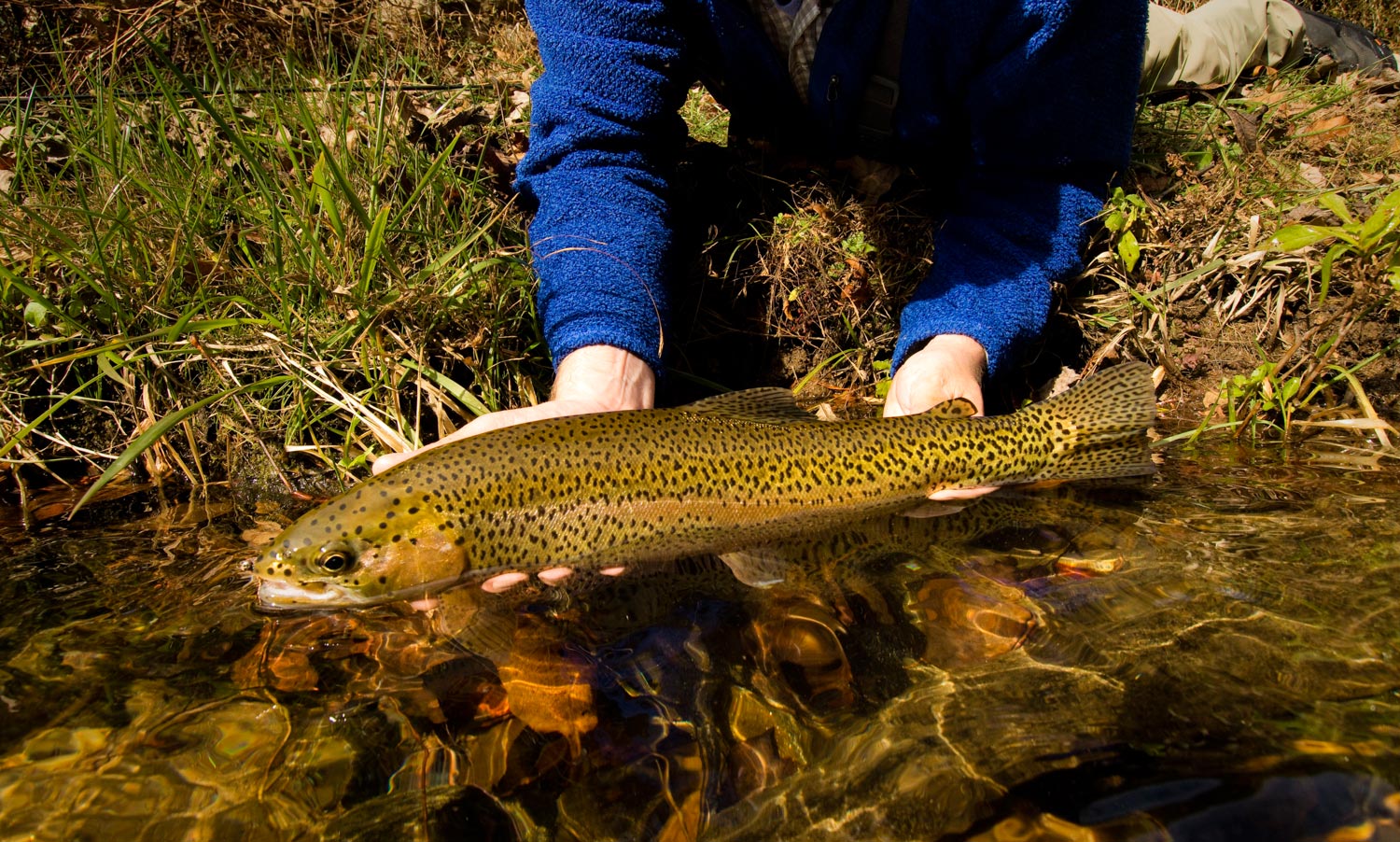
FISH, FISH EVERYWHERE AND NOT A FISH TO CATCH.
I was trout fishing with a friend in North Carolina the other day. We were fortunate to find a nice piece of water which held a good size pod of fish. Maybe a dozen total spread across the tail out. A couple of them were really nice fish. I called my buddy over and pointed them out to him, insisting he take a shot at them.
He’s fairly new to fly fishing and was a little intimidated by the sight of all those fish. He didn’t know exactly how to approach the situation. Option paralysis took over and he made a choice that I suspect a lot of anglers make in that situation. He dropped his fly upstream of the pod and hoped for the best.
Casting to the geometric center of a pod of fish is sometimes successful but never optimal. Often you spook the whole pod and walk away empty-handed. If you catch a fish it will likely be the small enthusiastic fellow darting around taking what he can get. The big guy is not going to move to your fly. He’s going to play it cool.
Any bird hunter will tell you, when you flush a covey of birds, you don’t fire into the group. You will only end up shooting
Read More »The Toughest Water in Wyoming
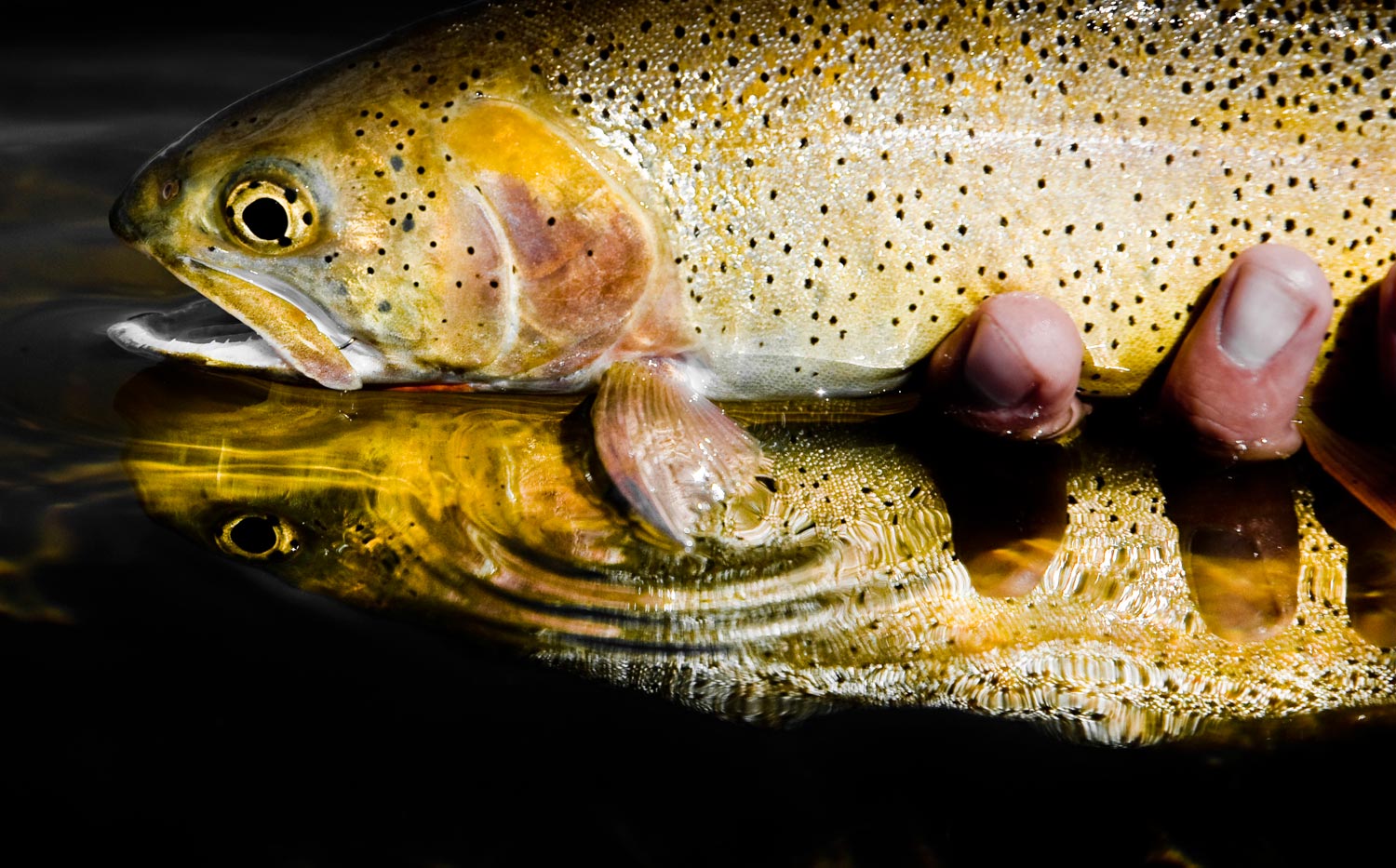
“HOW WAS YOUR DAY?” ASKED THE GUY AT THE FLY SHOP COUNTER.
“WELL,” I ANSWERED, “I FISHED THE TOUGHEST WATER IN WYOMING.”
Everyone rolled their eyes. This was exactly the response I expected. Working at a fly shop in Jackson hole, I imagine, you get to listen to more than a few boastful dumb asses. When I told them where I’d spent the day, they all laughed and agreed, I’d fished the toughest water in Wyoming. See if you can figure out what happened?
Read More »7 Reasons I use the Double Figure 8 Loop Knot In Freshwater And Salt
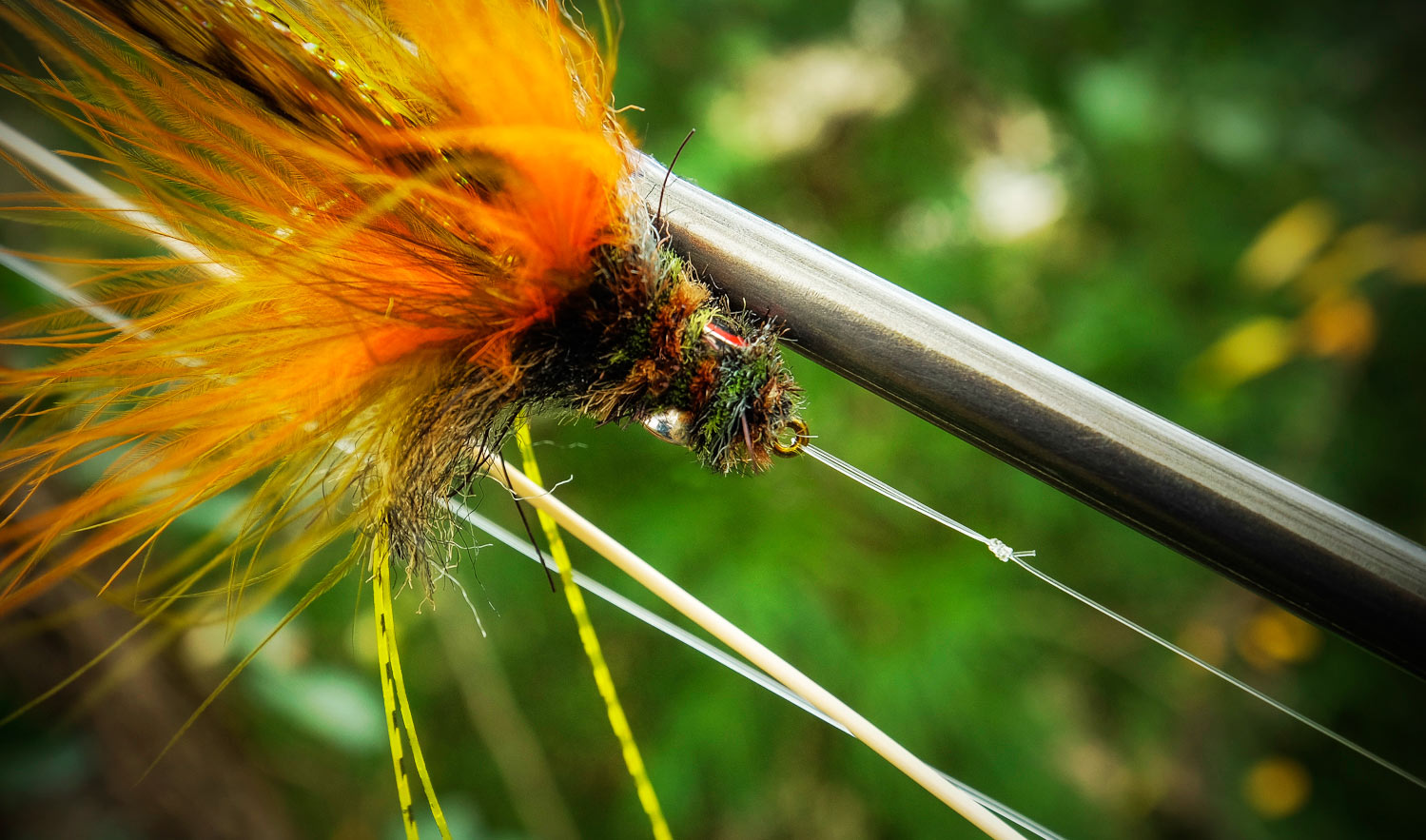
By Louis Cahill
This easy fishing knot will help you catch more fish.
I learned the Double Figure 8 Loop Knot when I started getting serious about tarpon fishing. It quickly became the go-to knot for all of my saltwater and streamer fishing. I even use it to attach nymphs from time to time. It has become indispensable to me and I am absolutely sure that I catch more fish by using it. No matter what species you target, the Double Figure 8 will help you fish better.
HERE ARE 7 REASONS I USE THE DOUBLE FIGURE 8 LOOP KNOT.
Better Action
The key to enticing fish to eat a fly is lifelike action. Since a loop knot doesn’t lock the tippet down against the eye of the hook, your fly is free to move at any angle in the water. Any fly attached with a loop knot will move in a more lifelike manner and is more likely to be eaten.
Flies sink faster
With a traditional fishing knot, like a clinch knot where the tippet is locked to the eye of the hook, a weighted fly has to pull the tippet down across its width. This causes resistance. Think of it as putting your rod tip in the water and moving it quickly sideways. Can you feel the resistance? With a loop knot, the fly can pivot in the loop and dive, drawing the tippet down along its length. Think of that as plunging your rod tip into the water tip first. Much less resistance, right? That’s why loop knots are the standard for saltwater fly fishing.
Small profile
The Double Figure 8 does not rely on multiple wraps of line for its holding power. The simplicity of the jam knot creates a strong knot that’s much smaller than other fishing knots. A smaller knot is less visible to the fish. This is huge when using heavy bite guards for species like tarpon or musky. This does, however, lead to the one exception in my use of this knot. I do not use it to attach the hook when fishing tube flies. Because I rely on the larger knot to stop the tube, I use a surgeon’s loop.
100% line strength
The Double Figure 8 is a jam knot. That means it’s two simple knots which slide together and lock into place. There are no weak points in the knot. No places where tippet can cut itself and tags don’t pull through when the tippet stretches. Your knot strength is the full tippet strength.
Low friction tightening
The strength of you knots is only as good as
Catching Trash and Trout
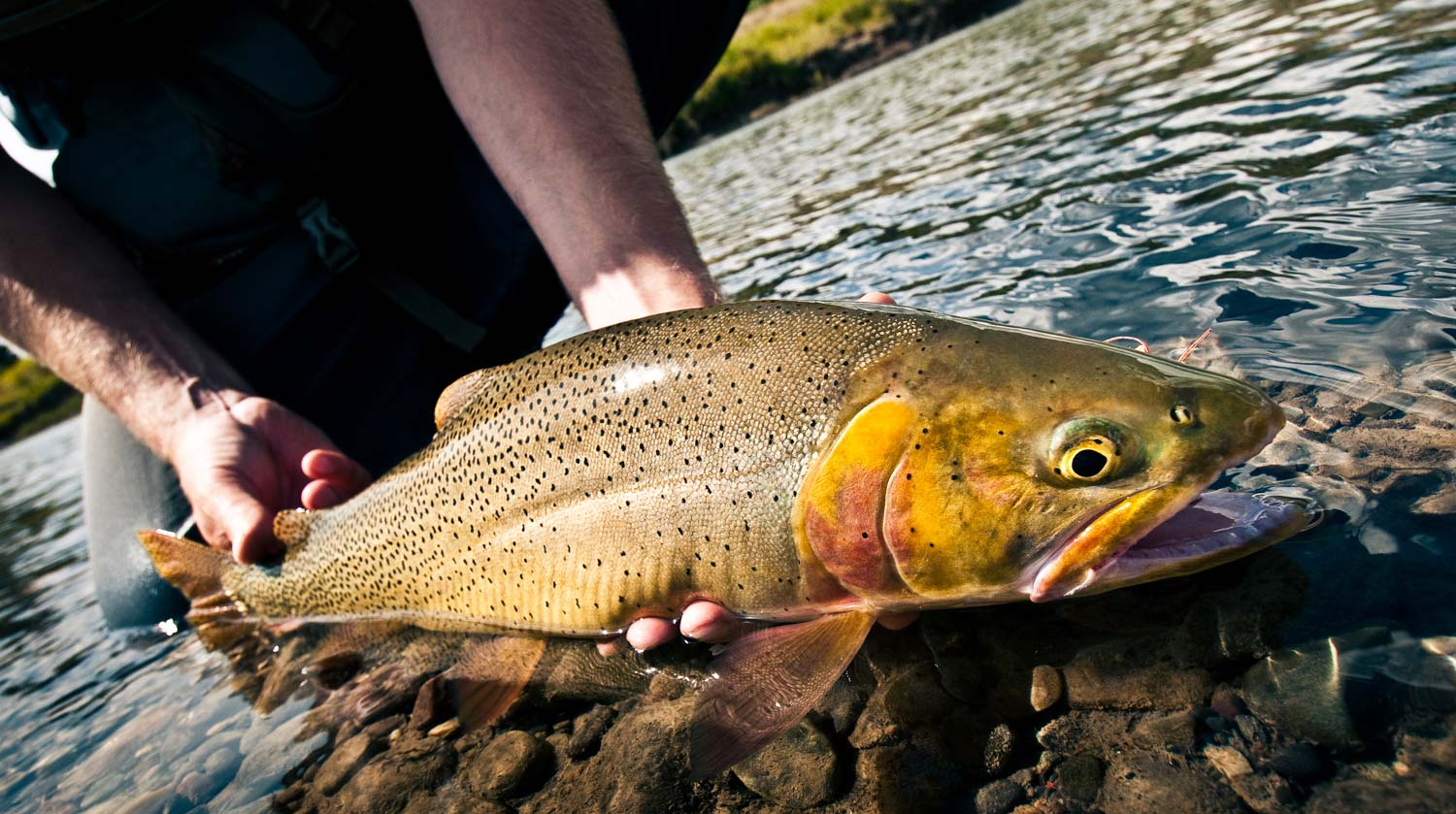
By: Alice Tesar
Robbie and I headed down stream on a remote creek in Wyoming and passed the only other angler we would see that day.
He was headed the opposite direction, having already fished the holes we were headed to. He seemed unsteady walking but opted to cross through the strong waist-deep current regardless. My husband, who is always willing to help a stranger (sometimes to my dismay as we rush to an appointment), watched out of the corner of his eye ready to jump in and pull this man from the current should he lose his footing. The man, slow and steady, made it across safely however as he reached the solid ground of the shoreline a plastic sandwich bag fell from his pack. No doubt he didn’t not see it, but I am also certain given his physical state would not have gone to great lengths to reclaim the piece of litter as it drifted downstream. Robbie and I rerouted our planned course downstream to grab the bag. It was still far out from us and we could see it was going to get hung-up in a large eddy soon. As we headed towards the eddy, Robbie cast out his streamer in jest for some “casting accuracy practice”. His line landed on the bag, but the sink tip leader sunk the fly before we could catch the bag. Re-cast out and again line on the bag, but unable to reel it in. I kept walking to where I thought the bag would land when I heard a yelp from Robbie, “THAT’S A HUGE ASS FISH!”
Read More »Choosing Carp Flies: What Are They Eating?
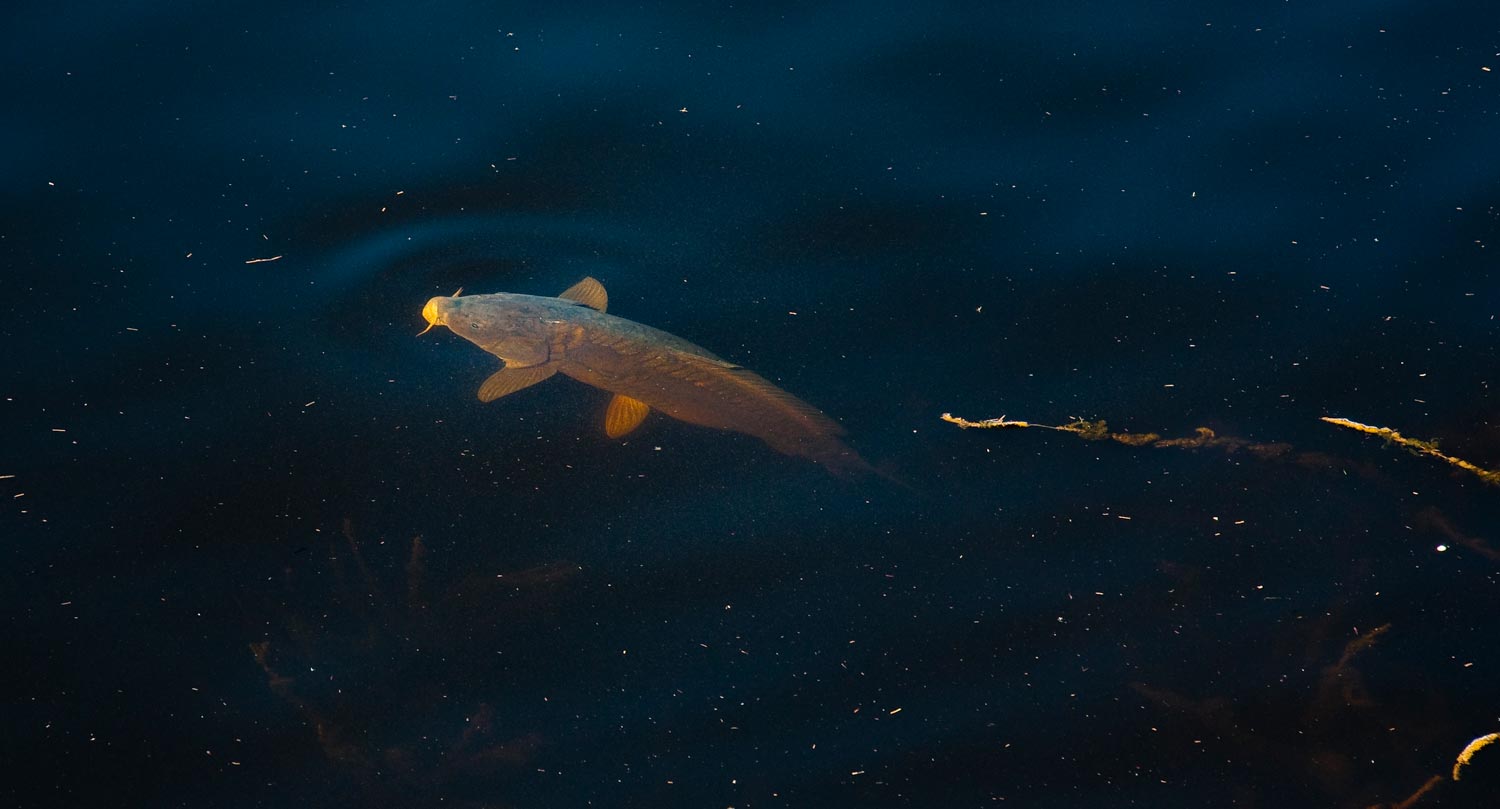
by Dan Frasier
“IF YOU THINK YOU KNOW WHERE TO START WITHOUT INTIMATELY KNOWING THE WATER AND FISH YOU ARE ABOUT TO CHASE, CARP WILL WHIP YOUR ASS.”
John Gierach, in his book Death, Taxes and Leaky Waders, writes about expertizing. That is, acting the part of an expert. He explains, “Our answers are laced with complicated qualifications. They ramble, they’re never simple. Often they’re so obscure they end up being meaningless. But then, if you have to ask the question in the first place you probably won’t understand the answer, right?”
This, I must admit, is not a phenomenon to which I’m immune. It’s not that I hope to make anyone feel ignorant or inadequate, nor is it to make myself look like I know more than anyone else. It’s a product of how the information came to me. I didn’t learn how to catch carp by being presented a tidy thesis from which to work. I picked up information in bits and pieces over the years and apparently that is how my brain stored it.
When I later attempt to access that information in order to answer questions for other people, it tends to come out jumbled, full of caveats and obscure to the point of being useless. It’s frustrating to myself and to the person who just wanted to catch a damn carp or two.
Many extremely good carp anglers have written and presented eloquently on how to catch these fish. Often, top 10 lists of must-do’s are used. Sometimes, detailed descriptions of how to address particular situations are discussed. Oftentimes the expert is reduced to simply giving some generic thoughts and suggesting some experimentation. The problem is, I know too many guys are way too good at catching these fish.
That’s a problem because one expert is often saying things that are diametrically opposed to another. Two flyfishers, equally adept at catching carp on the fly, and two totally different set of rules. It has to be extremely confusing to the beginner.
The effect of all of this conflicting advice is that we have made carp out to be a practically uncatchable species, which feeds in a way so unique that you apparently have to be born an expert to even expect to hook up. There are so many rules, and points and counterpoints that the fish seem impossibly complicated. Of course, that’s crap.
The real problem is that each expert is an expert on their fish. I hear advice and descriptions that I know would fail miserably elsewhere. I’ve SEEN it fail miserably elsewhere. Hell, I’ve been the failer!
I’m nothing if not stubborn, and so, despite it’s difficulty, I will be doing a series of posts aimed at helping the carp novice enjoy success earlier and more often than I did. I’ll be discussing generalities that will apply on any water you fish. There won’t be specific advice, or fly suggestions. That’s a fool’s errand. The fact is, if you think you know where to start without intimately knowing the water and fish you are about to chase, carp will whip your ass. So lets discuss the questions that only you can answer that will produce a successful carp outing.
WHAT ARE THEY EATING?
Read More »Small Stream, Big Reward
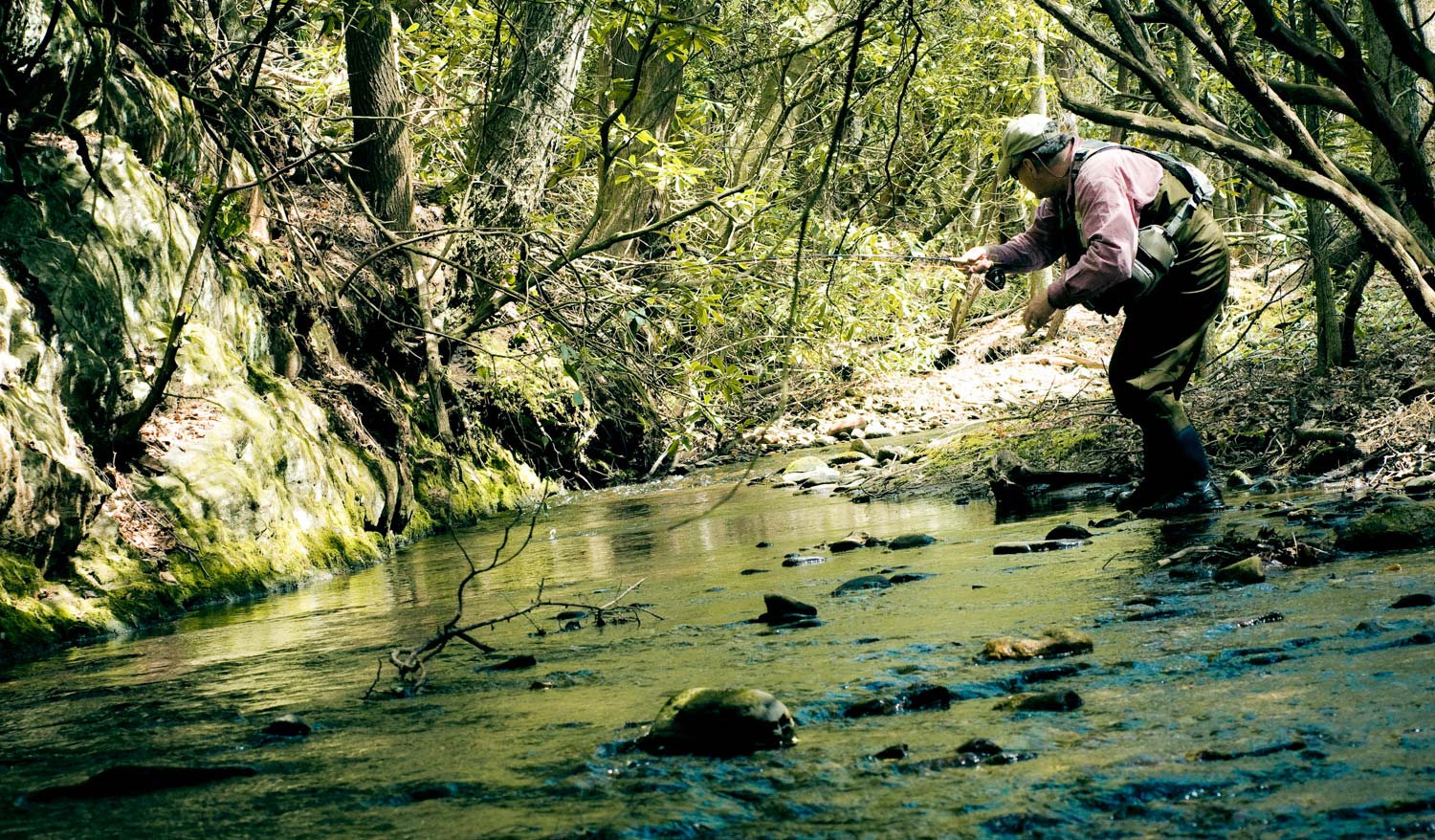
By Jason Tucker
Spring has sprung, and if you listen closely you can hear the rumble of fly anglers prepping their gear for trout fishing.
Trout seasons will be opening very soon if not already. We’re all looking forward to warmer temps, fly hatches, and trout looking up. While a lot of anglers will be hitting the main streams, I personally can’t wait to do some small-stream fishing. You should do some too.
There’s a lot of good reasons to skip the mainstream and fish the headwaters or tributaries. For instance, Michigan has somewhere between 14,000 and 20,000 miles of trout stream depending on what day of the week it is. While there are certainly several hundred miles of mainstream, the vast majority of trout holding water is typically in the headwaters and tributary streams. This translates to several advantages for you the angler.
Elbow Room. I’m quite fond of fishing Michigan’s Au Sable River. It’s one of the finest trout streams in the world. But never have I fished that river without seeing at least one other party, and if the hatches are on you’re probably fishing within sight of other anglers. It is a great river, with copious fly hatches and large numbers of trout that can support the pressure. But constantly bumping into others and being bumped into gets tiresome. If you simply go fish one of its many tributaries you can eliminate this problem entirely. As a matter of fact, I can say that most of the days I’ve spent on Michigan’s small streams, I’ve never seen another person.
An even greater surprise was when I moved to Georgia. I figured being this close to major population centers it would be even harder to find empty water. Nope. There’s some streams that receive a lot of pressure, but head up almost any ravine with a stream in it and you will have it to yourself, and quite frequently the fishing will be spectacular.
Wild Fish. While many a mainstem gets stocked on a regular basis, quite frequently the headwaters and tributaries are not stocked at all, either due to a lack of angler effort or lack of access for stocking trucks. This translates into
Read More »How Fly Rods, And Hearts, Break
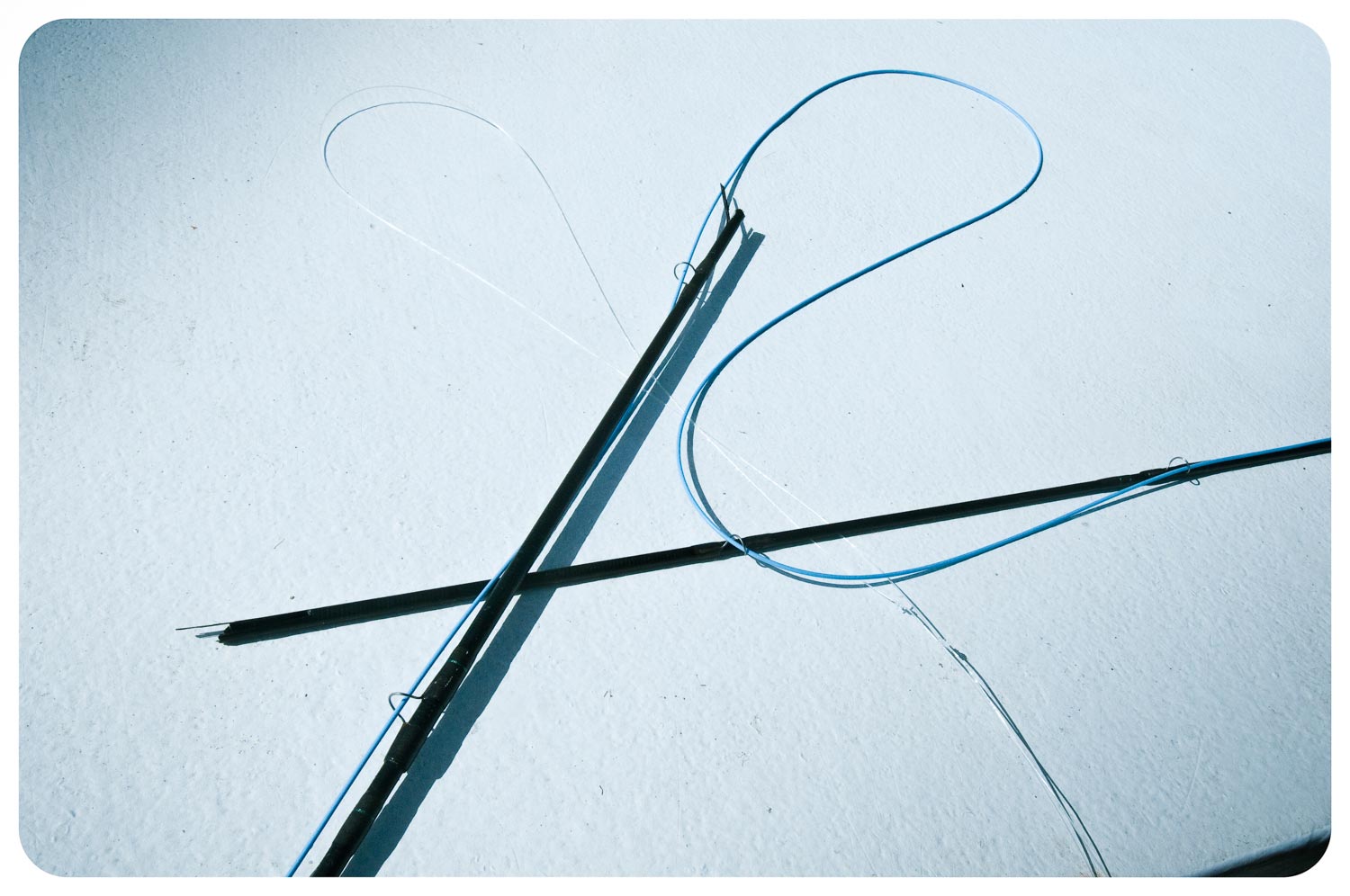
Broken fly rods are a fact of life, but there are things you can do to stop it from happening to you.
It happens to all of us. We all know the sinking feeling of holding that treasured favorite fly rod, shattered in our hands. Most of us can’t help but form emotional attachments to our gear. Favorite rods and reels become old friends, with whom we share memories of great days, special fish and life lessons learned. Warrantees are great, but it’s hard to replace an old friend.
I hear a lot of anglers complain about specific rods or rod brands, saying things like, “ I’ll never but another ‘Brand X’ after breaking two in a month.” It’s a delicate topic to address without hurting someone’s feelings, but the truth is, fly rods don’t break for no reason. While a high performance carbon fiber rod is certainly more fragile than its soulful fiberglass counterpart and a full spectrum between, the truth is that anglers break rods.
With extremely rare exception I have never seen a rod break for no apparent reason, even the ones I’ve broken my self.
If you are stewing over that statement, I ask you to bear with me for a bit and entertain the possibility that I’m right. Building and fishing bamboo rods for decades has taught me a thing or two about breaking rods and shedding tears. I’ve seen a lot of rods break and I even saw one catch fire and burn. (Long story.) In the interest of keeping those great fly rods fishing, I’ll share with you the most common reasons fly rods break and how to avoid them.
6 Reasons fly rods break
Physical Trauma
This covers some very obvious issues as well as some very tricky ones. With no scientific evidence I’ll say that the three most common causes for broken fly rods are ceiling fans, car doors and spurned spouses. If you’ve run afoul of any of these, you know it instantly. The remedy is simple. Be more careful handling your rod and you spouse.
PTs can be pretty sneaky though. A rod can be damaged without you even noticing and may not break for some time. Then one day you hook an unremarkable fish and it shatters dramatically. That was the case with the rod pictured in the header. This beloved Scott S4s was most likely damaged when it slipped out of the rod holder on a rough boat ride.
Some of the ways rods are most commonly physically damaged include being hit by flies during casting, being transported in cars or boots, being dropped and being left in hot rooftop rod lockers or rod tubes left in the sun. The latter is particularly tricky because a rod can begin to delaminate without showing any sign.
Of course, physical traumas can occur in manufacturing and shipping. I have found rods on my doorstep, still in the box, in more pieces than normal but while accidents happen, they are rare and manufacturing flaws are even rarer. I have visited the rod shops of many major brands and I can tell you the folks there take care and pride in their work.
Breaks at the ferrules
It’s pretty common for fly rods to break at the ferrules. The female ferrule can split and often the shaft will snap on the male end, either inside or near the ferrule. Frequently it will be the butt section of the rod that breaks, leaving the angler puzzled how the thickest part of the rod could just snap.
These breaks are not mysterious at all. The ferrule junctions
Read More »Poonfroggin
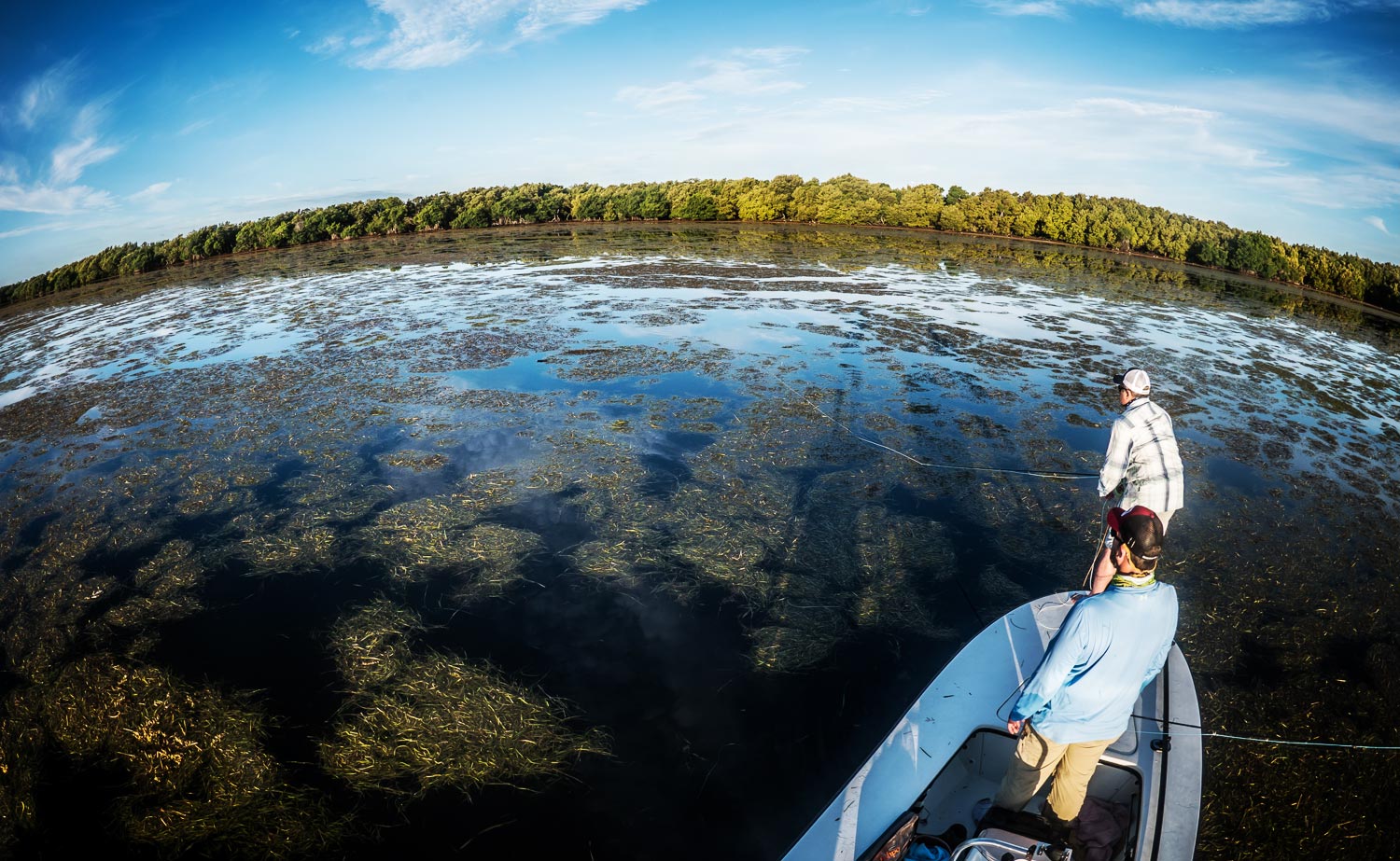
It’s already plenty warm by 6:00 AM.
The hot pink band hugging the horizon and lighting up the water foreshadows the brain-baking heat that will be here any minute. It’s going to be another brutally calm day in the Florida Keys. We’re poling quietly down the flat, the little Dolphin skiff slicing the mirror as we go.
My buddy Scott is on the bow while I apply thick white sun screen like cake frosting. My good friend Joel Dickey is on the platform and he seems a little fidgety. We found fish here the previous morning within just a few minutes, but it’s pretty quiet here now. Joel keeps looking over his left shoulder, like he’s being followed. After several glances he stops, fixed on the horizon.
“Naw, that’s…there’s somethin’ goin’ on over there,” he mutters. “Reel up Scott, we’re going over there.”
My eyes aren’t what they used to be. We’re halfway there before I see the birds. They’re working hard on the back side of a little bay. I can just make out the edge of a huge raft of floating weed. The little bay is choked with it. We come off plane, well away from the raft. Joel mounts the platform and takes up in quiet.
“You here that?” Joel asks. I don’t of course because I’m deaf as a post but Scott hears it and you can tell he’s excited about it, whatever it is.
“They’re crushing back there.”
The raft is about the size of a football field. I guess, I never played football. I played soccer and it’s about the same thing. Every so often the grass is interrupted by hot tub sized patches of open water. And in every one of those hot tubs there’s a tarpon working. Rolling and crushing shrimp.
Once in a while you’ll see this happen, when the weather is hot and still. It’s hard to believe that the ocean can run out of oxygen, but it does. In spots any way, when the conditions are just right. The warm water holds less oxygen than cooler water. When it’s calm at night and the turtle grass isn’t producing oxygen and there’s no wind to stir the surface, the shrimp start to suffocate. They come to the surface to find air and they seek the cover of the grass. Too bad for them that the tarpon know all about it.
These fish are little guys. Ten to thirty pounds but they are tarpon to the bone. So here’s the challenge. To make a pin-point cast, of sixty to seventy-five feet, into the far side of one of those openings, where you can get a couple of strips off before your fly is in the grass. Time the cast so the fish rolling in the open water is on his way back up to the surface and seal the deal ASAP.
Feeding them will be the easy part. Once you stick them they go ballistic. They jump and run and jump and run, sewing all of that grass together with your fly line. It’s just like fishing frogs for bass, except that’s a twenty pound tarpon you’re horsing out of the grass, not a three pound bass.
The casting, it turns out
Read More »Hard Driving

By Jason Tucker
“A little humor folks”
It’s Friday at last.
You have worked hard, saved up, finagled the time off from job and family obligations for this trip and now it’s here. The bite is on, the vehicle is loaded and you are making the long trek to trout country.
When you start out everything is ok. Spirits are high, the radio blares and the adrenaline flows. But after a few hours reality sets in. This is going to be a long drive. You are tired out from a long week of work, packing, and March Madness. Three hours into the drive is when your eyelids first start to drift south. You are barely halfway there. You turn up the radio and hope for the best, but in the monotonous white noise of the road you can see it all clearly in your minds eye- you slumped over the wheel, your SUV slowly arcing in a barrel roll, followed slowly by your drift boat, your eyes opening as a Slim Jim hits you in the face, followed by a ton of wreckage.
Such tragedy, and it doesn’t have to be this way. Here’s some tips for staying awake on those long drives to hot fishing, late at night.
Music: Radio, CD’s (as if), your iDevice, or satellite radio, all can be a good source of good road energy, but when the rubber really hits the late night road and the eyelids are drooping it can fall short.
Suggestion: Comedy channels on satellite radio- the ever changing comedy keeps you engaged, and it’s hard to nod off during a belly laugh.
Drinks: not alcohol, we’re talking cold energy. You could go old school- Coke, Mountain Dew, or my favorite, Dr. Pepper. New school is the vast array of energy drinks. Red Bull is the Cadillac of these judging by the price. Monster is more authentic for the majority of us fly guys- less expensive, lots of choices, and a good zip for the dollar. Are you really pushing the night driving envelope? Top off with a 5-Hour Energy or Fish On.
Snacks: crunchy snacks can keep you engaged and your mind alert, at least for a while. I’ve heard of everything from mint gum to sour candy to Doritos. The ultimate however are sunflower seeds, which are appearing in a growing variety of flavors. The combination of flavor, the work it takes to hull a seed in your mouth, spit the hull, and the ultimate but tiny reward work together to engage the taste buds and mind, keeping you awake.
Talk Radio: That’s right. It takes two forms. Don’t go for your comfort zone, unless sleep at 70 mph is your thing. I’ll break this down into two forms.
Jesus Radio: There is no shortage of religious programming in America. It encompasses everything from prosperity gospel types like Joel Osteen, to your basic bible pounding, to the most vehement hellfire-breathing screed- pick your poison, examine your soul, and stay awake. Whether you totally agree, or are a philosophy student who likes to argue, Jesus radio can keep you awake for at least a hundred miles. More if you’re in the South. Caution:
Read More »